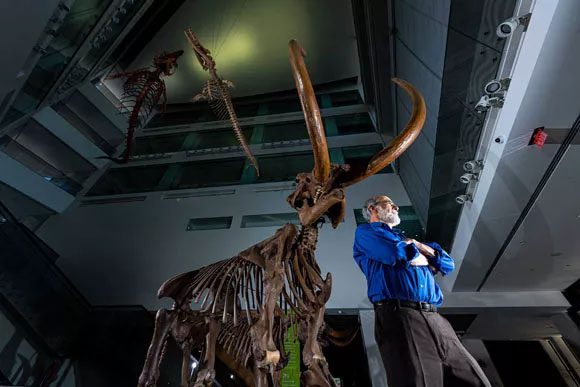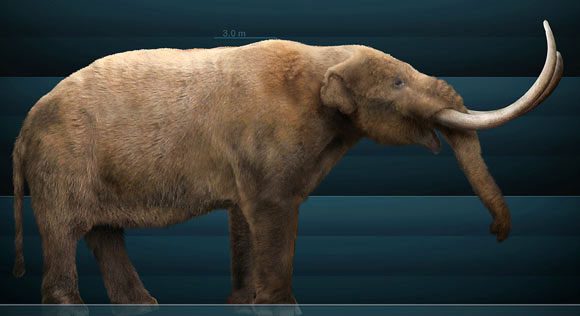According to Daily Mail, a research team from the University of Cincinnati, Michigan State University, and the University of Nebraska-Lincoln (USA) has scanned and studied the isotopes in the tusks and skull of a North American mastodon (Mammut americanum), also known as the Buesching’s tooth elephant, which weighed about 8 tons when alive and is approximately 13,200 years old.
This creature was discovered at a peat mining site near Fort Wayne, Indiana, USA, in 1998.

Professor Daniel Fisher from Michigan State University, a member of the research team, next to the 13,200-year-old “monster” skeleton – (Photo: MICHIGAN STATE UNIVERSITY)
According to Sci-News, by using tusk isotopic analysis and scanning a thin slice of tusk, the research team successfully managed to “turn back time” to track changes in its habitat and behavior during both its “juvenile” and adult stages.
The tusks of the mastodon and similar creatures typically have growth rings similar to tree rings; additionally, the isotopes of elements in the tusks contain numerous factors that allow for the determination of the environment in which it lived during each growth ring. A total of 36 samples from the “juvenile” period were isolated from the skeleton, along with 30 samples from the adult stage.

Mastodon (Buesching’s tooth elephant) – (Photo: Sergio De la Rosa Martinez)
The ratio of strontium isotopes in the tusks provides geographical traces matching specific locations on the map of the United States, while the oxygen isotope values indicate seasonal weather fluctuations.
This creature made annual trips to Indiana every summer for the last three years of its life, with the purpose of seeking a mate.
Unfortunately, its final trip – at the age of 34 – ended its life. A bloody battle occurred with another male mastodon, aimed at competing for a “mate.” As a result, the rival used its massive tusk to pierce its skull.
The findings have just been published in the scientific journal Proceedings of the National Academy of Sciences.





















































